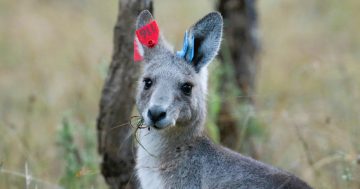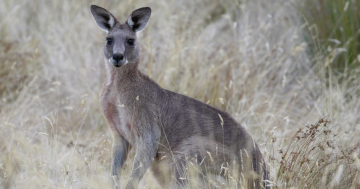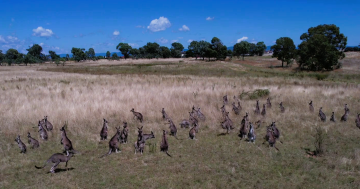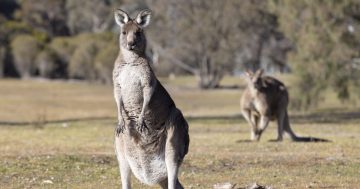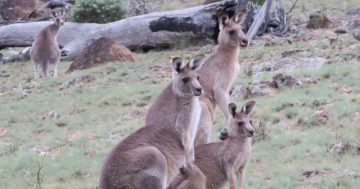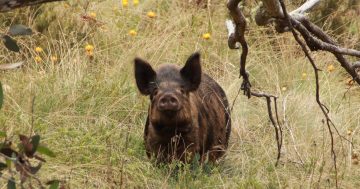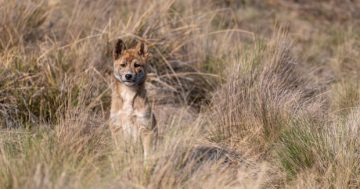
The ACT Government will use contraceptive darts to control the ACT’s kangaroo population. Photo: File.
In a national first, the ACT Government will use contraceptives to slow kangaroo population growth.
However, it won’t eliminate the Territory’s reliance on the somewhat controversial practise of culling Eastern Grey Kangaroos in nature parks.
This winter, around 1500 animals are likely to be culled, around the same number as last year despite the introduction of contraceptives.
Culls have been used to control kangaroo populations in the city’s fringes and nature parks for around 15 years.
Trials of the kangaroo contraception drug, GonaCon, have been underway since 2015, involving firing loaded darts at female kangaroos.

Minister for the Environment Rebecca Vassarotti said the ACT wanted to have the most humane kangaroo management practices in the country. Photo: Ian Bushnell.
Minister for the Environment Rebecca Vassarotti said the trials had been successful and had left around 80 per cent of female kangaroos infertile for five years after the injection.
It’s hoped the $300,000-a-year program will offer a more humane approach to controlling kangaroo populations than shooting animals alone and that wider use of the drug will reduce the need to kill animals.
A total of $1.2 million will be spent on fertility control treatments as part of the government’s annual kangaroo management program through to June 2025.
Ms Vassarotti said the ACT wanted to have the most humane kangaroo management practices in the country.
“We know we need to address overpopulation in ecologically sensitive areas and we have been working for decades to trial non-lethal methods,” Ms Vassarotti said.
“While it is challenging, the majority of the Canberra community understands the need to manage our kangaroo populations in our nature reserves to protect biodiversity.”
A survey in 2019 showed 80 per cent of Canberra residents supported the use of fertility control for kangaroos.
“The use of the GonaCon vaccine at selected sites is expected to reduce population growth rates and decrease the amount of conservation culling required in the future,” Ms Vassarotti said.
ACT Conservator for Flora and Fauna Ian Walker said population management was still needed as kangaroos were above sustainable densities in some areas.
“While recent rains have provided some much-needed relief for plants and animals, in some areas, kangaroos are still above sustainable densities, so population management is needed to ensure all species thrive, including other plants and animals that share these important conservation areas,” Mr Walker said.
“Fertility control methods are best suited to relatively small, discrete populations with minimal immigration, so culling will continue to be required as part of our ongoing kangaroo management.”
This year, kangaroos will be darted with an anaesthetic and the GonaCon will be administered by hand. The animals will be fitted with ear tags so they can be monitored.
“In future, GonaCon will also be administered remotely using a dart that simultaneously injects GonaCon and sprays a marking paint on the fur of the animal,” Mr Walker noted.
Last year, 1505 kangaroos were culled, slightly less than the 1568 number expected to be killed.
At the time, the ACT Government said it tried to reduce waste generated from the carcasses and some were used for an endangered native species breeding program.
Last year, culls took place was across Mount Ainslie Nature Reserve, Mount Majura Nature Reserve, East Jerrabomberra Grasslands, Farrer Ridge Nature Reserve and Mulligans Flat Woodland Sanctuary.












